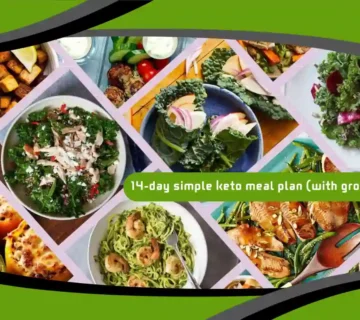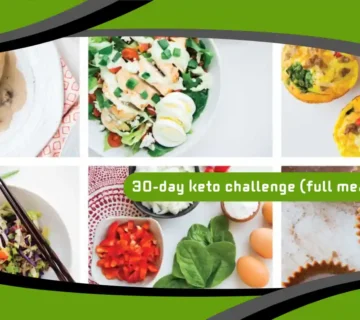The ketogenic diet has taken the world by storm, primarily due to its ability to encourage fat loss and enhance metabolic efficiency. But what happens when you pair it with a low-calorie strategy? A low-calorie keto meal plan offers a potent combination of nutritional ketosis and calorie control, ideal for individuals aiming to lose weight, manage blood sugar, or break through fat loss plateaus. This guide dives into how to effectively implement a low-calorie keto diet without sacrificing nutrients, flavor, or satiety.

Understanding the Low-Calorie Keto Approach
The ketogenic diet revolves around high-fat, moderate-protein, and very low-carb intake, typically under 50 grams of net carbs daily. When combined with a calorie deficit, the body shifts into an even deeper state of ketosis, relying more efficiently on fat stores for energy. This dual approach is particularly effective for individuals with insulin resistance, metabolic syndrome, or stubborn body fat.
Who Should Consider a Low-Calorie Keto Plan
This hybrid method is suitable for those with experience in keto who are looking to accelerate results. It’s especially beneficial for overweight individuals, people with type 2 diabetes, or those preparing for a body composition goal such as a fitness competition. However, it should be approached cautiously by beginners or those with a history of disordered eating.
Balancing Macronutrients While Reducing Calories
Maintaining the ketogenic macronutrient ratio becomes trickier when you’re on a calorie deficit. The goal is to prioritize healthy fats while ensuring protein is adequate enough to preserve lean muscle mass. Carbohydrates remain low, but every calorie must count, coming from nutrient-dense and bioavailable sources.
Strategic Meal Planning for Low-Calorie Keto
Planning is essential. It prevents nutrient deficiencies and supports consistency. A well-structured weekly plan should include three small meals or two meals with a snack, depending on your caloric needs and eating window. Meal prepping ahead of time will ensure you’re meeting your goals without reaching for high-carb alternatives.
Choosing the Right Fats for Satiety and Health
Not all fats are created equal. While the keto diet traditionally embraces fats, a low-calorie version requires selecting those that offer both satiety and health benefits. Focus on whole food sources like avocados, extra virgin olive oil, fatty fish, and raw nuts in moderation. Avoid overusing oils or butter, as they are calorie-dense with limited nutritional diversity.
Lean Protein Choices to Preserve Muscle Mass
Preserving lean tissue is crucial in a calorie deficit. Opt for high-quality protein sources such as eggs, chicken breast, grass-fed beef, turkey, and plant-based options like tofu or tempeh. These provide the essential amino acids needed for tissue repair and muscle maintenance without overloading on calories.
Vegetables: The Cornerstone of Nutrient Density
Low-carb vegetables like spinach, kale, zucchini, broccoli, and cauliflower offer fiber, vitamins, and minerals with minimal calories. They add volume to meals, supporting satiety and digestive health. Incorporating a variety of non-starchy vegetables ensures you’re covering your micronutrient bases even with limited caloric intake.
Avoiding Common Pitfalls on a Low-Calorie Keto Diet
One major challenge is not eating enough. People often cut calories too drastically, leading to fatigue, hair loss, or hormonal imbalances. It’s also easy to underconsume micronutrients, especially magnesium, potassium, and sodium. This can lead to symptoms like cramps, weakness, and the infamous “keto flu.”
Hydration and Electrolyte Balance
Water intake is crucial, as glycogen depletion in ketosis reduces water retention. This can quickly lead to dehydration and electrolyte imbalances. Ensure you’re getting adequate sodium, potassium, and magnesium daily—either through food or supplementation. Bone broth, leafy greens, and mineral-rich salt are practical solutions.
Watch also: One-Pan Keto Dinners: Quick, Flavorful Meals for Busy Low-Carb Lifestyles
Tracking Progress Beyond the Scale
Weight loss is only one metric. Track body measurements, energy levels, mental clarity, and digestive health to get a full picture of your progress. Many find their cognitive performance and mood improve dramatically with a low-calorie keto diet, even before the scale shows dramatic changes.
Incorporating Intermittent Fasting with Low-Calorie Keto
Many find that intermittent fasting (IF) pairs naturally with keto, as appetite decreases during ketosis. Utilizing time-restricted eating windows, such as 16:8 or 18:6, can enhance fat oxidation and simplify meal planning. However, make sure that you still meet your nutritional needs within the eating window.
Sample Low-Calorie Keto Meal Plan Outline
Start your day with a boiled egg and sautéed spinach in olive oil. Mid-day, enjoy grilled salmon with zucchini noodles. For dinner, opt for chicken breast over cauliflower mash with a drizzle of avocado oil. Add a snack of chia pudding with unsweetened almond milk, and you’ve hit all the macros without overdoing calories.
Meal Timing and Frequency Strategies
Some people thrive on three smaller meals, while others do better with two larger meals. Experimentation is key. Pay attention to hunger cues and energy levels throughout the day. For most, spacing meals around peak activity or workout windows offers the best balance of energy and recovery.
Supplements to Consider on a Low-Calorie Keto Plan
Because of calorie restrictions and limited food variety, supplementation might be necessary. Consider magnesium, omega-3s, vitamin D, and electrolytes. A well-chosen multivitamin can also fill in any gaps. Always choose clean, keto-friendly supplements without added sugars or fillers.
Smart Snacking Without Breaking Your Calorie Budget
Snacks can derail your progress if not handled wisely. Stick to low-calorie options like celery with almond butter, hard-boiled eggs, or a few olives. These choices provide healthy fats and fiber without spiking blood sugar or adding unnecessary carbs.
Watch also: Rapid Results: A Quick Keto Plan for Last-Minute Weight Loss That Actually Works
Cooking Methods That Maximize Nutrition and Flavor
Grilling, steaming, baking, and sautéing in moderate amounts of healthy fat are ideal. Avoid deep-frying or excessive use of heavy creams and cheeses. Emphasize fresh herbs, spices, and acidic ingredients like lemon juice to keep meals flavorful without additional calories.
Monitoring Macronutrients with Apps and Tools
Nutrition tracking tools like MyFitnessPal, Cronometer, or Carb Manager can help ensure you stay within both your keto and calorie limits. These apps allow you to analyze nutrient breakdown, making it easier to adjust portions and identify areas for improvement.
Adapting the Plan to Special Conditions
People with thyroid conditions, PCOS, or insulin resistance may respond differently to low-calorie keto plans. Always consult a healthcare provider or nutritionist before committing long-term. Customization based on health history is crucial for safety and effectiveness.
Long-Term Sustainability and Adjustments
Eventually, your calorie needs and goals may change. The goal is not to stay low-calorie forever but to use it as a phase for fat loss or metabolic reset. Once desired results are achieved, gradually increase calories with whole keto foods to maintain results and support long-term health.
Final Thoughts on Low-Calorie Keto Meal Planning
A well-executed low-calorie keto meal plan can be a transformative approach for fat loss, insulin sensitivity, and mental clarity. However, it requires planning, nutrient mindfulness, and adaptability. With the right strategy, this dietary method can unlock impressive results without deprivation or imbalance.
Watch also: Flavor-Packed Keto Buffalo Chicken Wings – Quick & Clean Recipe



No comment